Historical Haberfield
Back in the early 20th Century -- just after Australia federated -- the inner-Western Sydney suburb of Haberfield was being laid out in the popular garden city style. With the help of estate architects, it was quickly developed into an area with high quality houses and strict design covenants. Today, Haberfield remains one of the best preserved examples of Federation-era homes in Australia.
"Mostly the houses were modest in size, with generous backyards and represent an arcadian version of the Australian suburb." -- Lahznimmo Architects
Similar design covenants apply to the area today -- only in the form of heritage controls. A recent renovation by Lahznimmo Architects demonstrates an innovative and forward-thinking approach to heritage…

Glazed Bricks: The original Federation-era home is constructed from bricks, the new extension uses a charcoal glazed brick to integrate with the original home, without trying to match it.
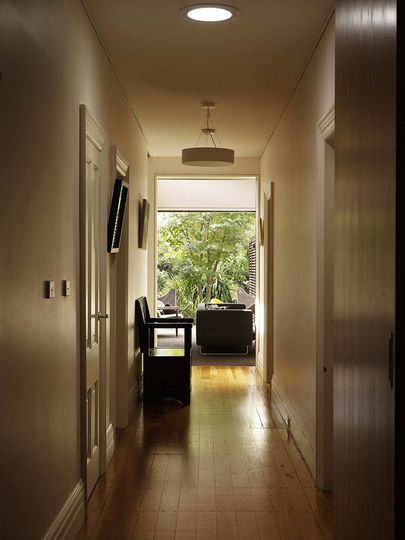
A View to Greenery: Entering Haberfield House into the original hallway, you're greeted by a view of the new living area and the garden beyond. The rear extension flows seamlessly off the original hallway and into the garden.
Conservation Zone
The Haberfield area is now a Conservation Zone to protect examples from an important historical era of Australian housing. The council take a very literal approach to heritage -- Federation facades must be retained in their original condition and modern additions cannot be visible from the street. And while that's good news for the picturesque turn-of-the-century streetscapes, this hardline approach to heritage has led to a very specific style of addition -- long, low-lying rear spaces which sprawl into the backyard hidden from the protected streets. The majority of these additions connect awkwardly to the existing home, and have a terrible sense of space due to necessarily squashy ceiling heights.
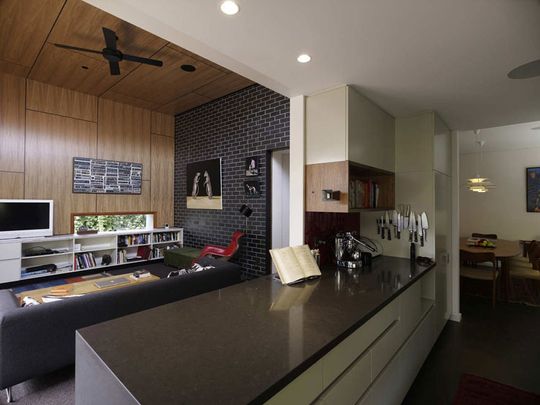
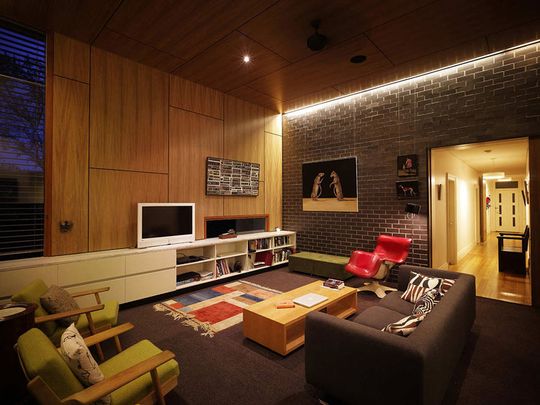
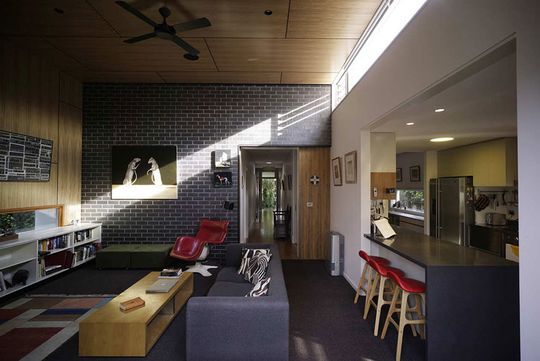
Architects' Home
Architects Andrew Nimmo and Annabel Lahz, principals of Lahznimmo Architects, designed the Haberfield House for themselves. As architects they were in a unique position to push the boundaries of the planning laws and establish an innovative model for how sensitive and complimentary additions can be achieved in heritage zones.
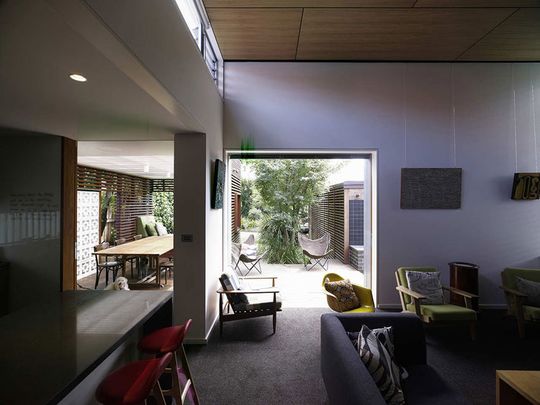
Indoor-Outdoor Living: A generous opening to the garden creates a great indoor-outdoor relationship.
Righting Past Wrongs
The new extension takes up the same footprint as a series of previous, less sensitive additions. These previous alterations left the home's internal planning confused and lacking a connection to the outdoors. Within that footprint Lahznimmo Architects designed a new structure and reorganized the spaces to help them flow more naturally. Now the light, ventilation and connection to the outdoors is far superior.
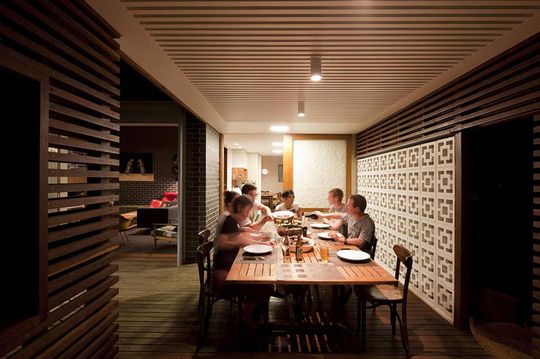
Outdoor Entertaining: An undercover timber batten alfresco dining area is an outdoor room for entertaining.
New Living 'Cube'
As the site (and planning law) dictates, the extension takes place at the rear. A dark, glazed brick cube sits beside the original home, balancing the existing steeply pitched roof. The new cube is connected to the old house both materially and physically, but it is clearly a contemporary and distinct space.
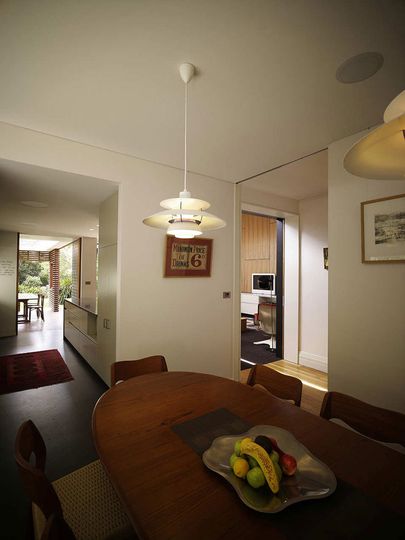

Dining Area: The dining room has a horizontal slit window to maintain privacy while also letting in some natural light. It opens into the kitchen and living area, so while it's not completely open-plan, it is visually and spatially connected.
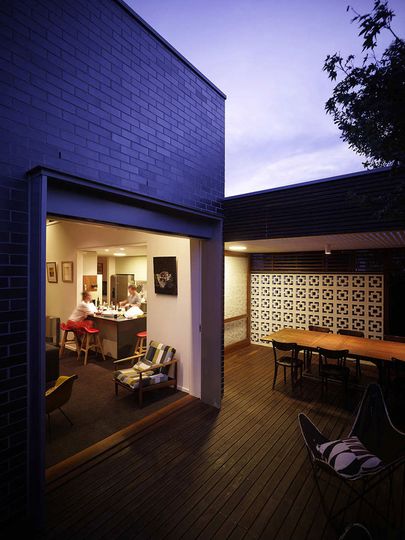
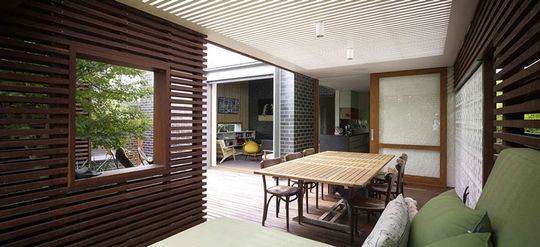
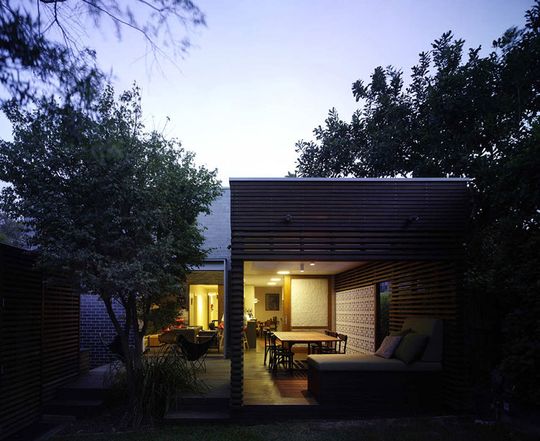
Deck with Benefits
A deck connecting the alfresco dining, the living area and the detached garage is set at the same level as the internal spaces to create a seamless transition between indoors and outdoors. It also hides a 5000 liter rainwater tank used for toilet flushing, clothes washing and watering the garden.
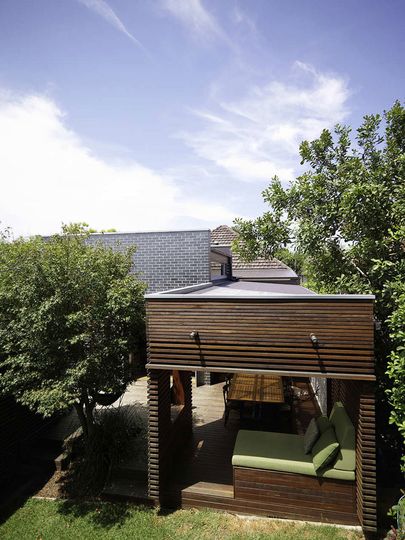
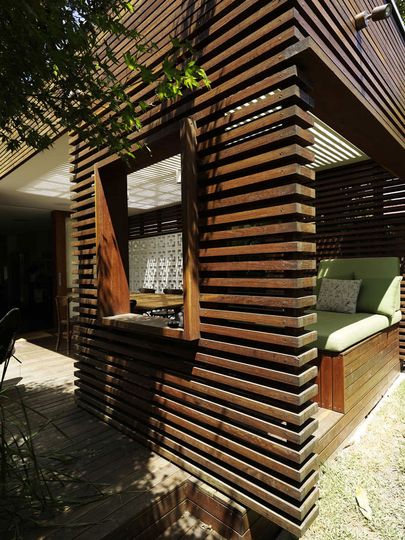
Alfresco Dining
The alfresco dining area, clad in timber battens, provides a protected outdoor entertainment space. It has a translucent polycarbonate roof to protect from the rain without blocking sunlight. Painted timber battens on the underside of the polycarbonate give the area a dappled light akin to sitting under a shady tree. The white breeze-block wall was recycled from the demolished post-war addition -- a reminder of the area's history of post-war change.
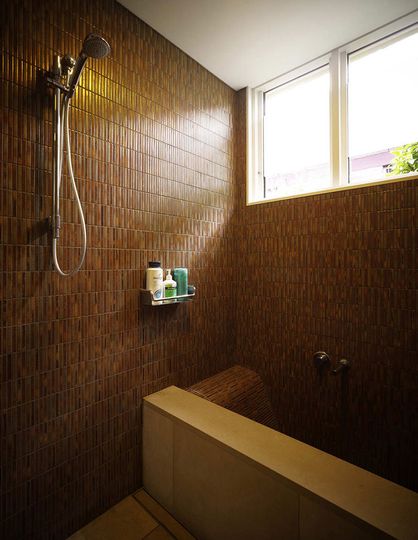
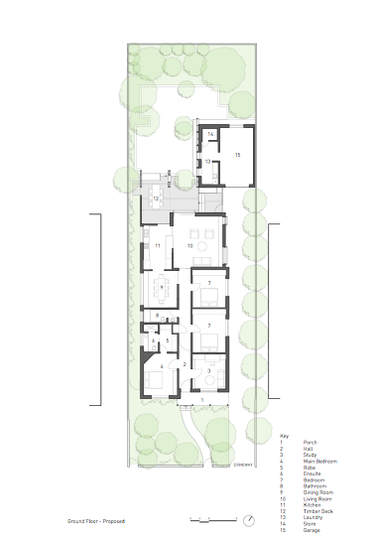
Model Home
Houses designed by architects for themselves give us a special insight into what drives a practice. In this case, Lahznimmo Architect's style shines through as innovative, warm and richly detailed. They've bravely challenged the status quo of alterations and additions in Haberfield, establishing a new model for considerate extensions in this Conservation Zone that will hopefully act as inspiration for future projects in the area.